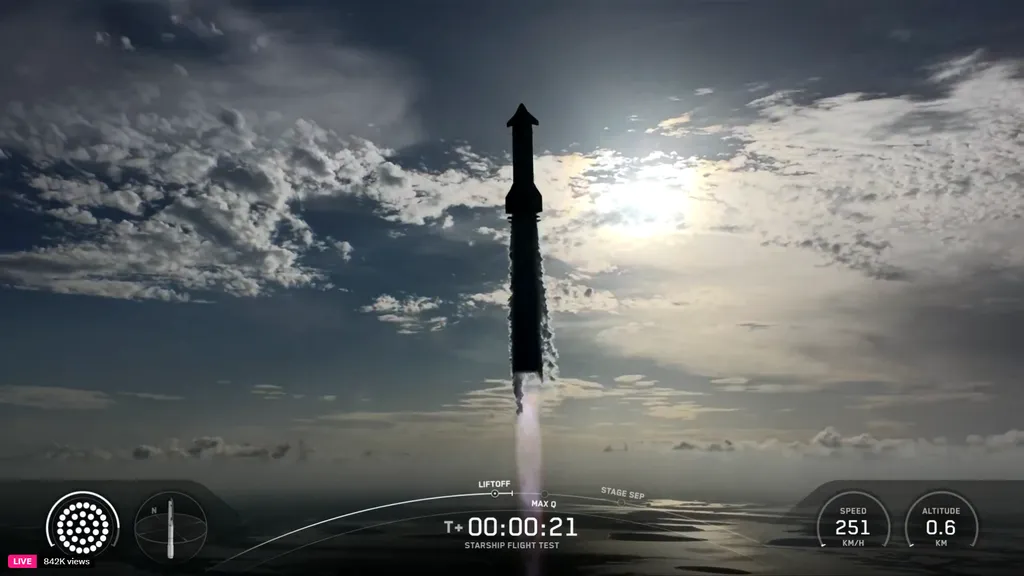On August 26, 2025, SpaceX launched its Starship rocket for the tenth time. The launch happened at 6:30 p.m. Central Time from Starbase in Texas. This test flight marked a big win for the company. It came after three failed flights earlier in the year.
The Starship system has two main parts. The bottom part is the Super Heavy booster. It has 33 powerful Raptor engines. The top part is the Starship upper stage. It has six Raptor engines. Together, they make the tallest and strongest rocket ever built.
This flight was important. SpaceX wanted to test new things. They aimed to deploy fake satellites. They also wanted to restart an engine in space. And they hoped for safe splashdowns in the ocean.
The launch went well at first. All 33 engines on the booster started. But one shut down early. The rocket still climbed high. It reached a suborbital path. That means it went into space but not into full orbit.
Background on Starship Program
SpaceX has been testing Starship since 2023. The goal is to make a fully reusable rocket. This will help send people to the Moon and Mars. NASA is using Starship for its Artemis program. They plan to land astronauts on the Moon by 2027 or later.
Before Flight 10, there were problems. Flight 7 had a fire in the upper stage. It lost engines and exploded. Flight 8 had a hardware failure. Flight 9 had a propellant leak. The ship broke up during reentry.
In June 2025, another setback happened. Ship 36 exploded during a ground test. SpaceX had to use Ship 37 instead. Booster 16 was ready after tests.
Details of the Launch and Ascent
The rocket lifted off smoothly. It produced over 16 million pounds of thrust. That’s more than any other rocket.
After about three minutes, the stages separated. This is called hot staging. The upper stage engines fired while still attached. Then it pushed away.
The booster flipped around. It headed back to Earth. One engine was turned off on purpose. This tested failure scenarios. The booster splashed down in the Gulf of Mexico. It exploded on impact. But that was expected for a water landing.
The upper stage kept going. It reached a height of almost 200 kilometers. It coasted around part of the Earth.
Key Achievements During the Flight
About 20 minutes in, a big milestone happened. The ship deployed eight fake Starlink satellites. They used a new “Pez dispenser” system. This was the first time SpaceX tested payload release on Starship.
Next, one Raptor engine restarted in space. This short burn showed it can work in vacuum. It’s key for future orbital flights.
The ship then faced reentry. It tested new heat shield tiles. Temperatures got very hot. An explosion happened in the engine area. It damaged the aft skirt. One flap also melted a bit. But the ship stayed in control.
It flipped to vertical. Then it fired engines for a soft landing. The ship splashed down in the Indian Ocean. A buoy camera caught it. The ship exploded after tipping over. Again, this was not a surprise for water.
Challenges Faced and Lessons Learned
Not everything was perfect. The early engine shutdown on the booster was a surprise. It might have been a real failure or part of the test. SpaceX will check the data.
During reentry, parts broke apart. The protective skirt failed. Flaps got damaged. This shows heat protection needs more work.
Past flights had worse issues. Fires, leaks, and explosions stopped them early. This time, the ship finished all main goals. It survived reentry after failures in Flights 7 to 9.
SpaceX learns from each test. They fix problems fast. This “fail fast” method helps them improve.
Future Plans for Starship
SpaceX wants to launch again soon. Maybe in eight weeks. They need FAA approval. Data from Flight 10 will help.
Next flights might try orbital paths. They could deploy real Starlink satellites. SpaceX also plans to catch the booster with tower arms. This “chopstick” catch happened in earlier tests like Flight 5.
Long term, Starship will refuel in space. This is needed for Moon trips. NASA counts on it for astronaut landings.
Elon Musk, SpaceX CEO, dreams big. He wants uncrewed Mars flights next year. Human flights could follow.
This test brings those dreams closer. It shows Starship can handle tough tasks. With more tests, it could change space travel.
The flight lasted about one hour and six minutes. It was watched by millions online. SpaceX shared live views via Starlink. This success boosts hope for reusable rockets.
In summary, Flight 10 was a step forward. After setbacks, SpaceX proved their tech works. The team cheered at milestones. Now, they prepare for more ambitious missions. The future of space looks bright.
